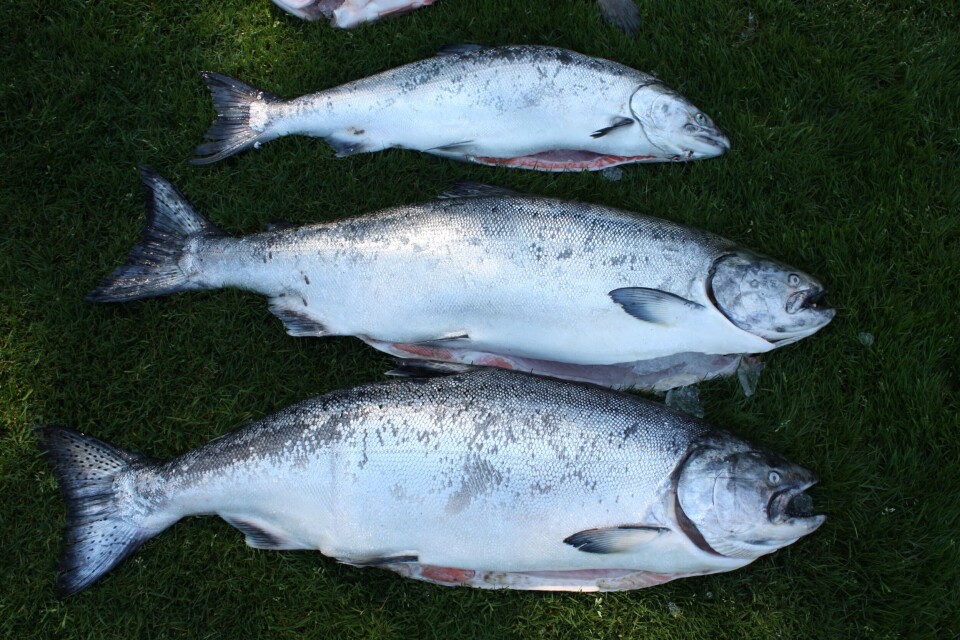
Transgenic salmon under the microscope
While the existing commercial salmon farming sector in Canada has clearly stated that it is not interested in growing transgenic salmon- a position echoed by the International Salmon Farmers Association- government researchers are trying to give regulators the information they need to deal with anticipated applications from new entrants into the aquaculture business. The researcher that likely has the longest track record in this field is Dr. Bob Devlin at the West Vancouver Laboratory, where he works in the Centre for Aquaculture and Environmental Research. He recently spoke with Tessa Holloway of the North Shore News;
When regulators in Canada and abroad decide whether to allow genetically engineered salmon on the dinner plate, they'll be relying heavily on the research of a West Vancouver-based scientist. Robert Devlin has been conducting risk assessments of GE salmon since 1989 at Fisheries and Oceans Canada's Centre for Aquaculture and Environmental Research in West Vancouver , trying to answer the question of what would happen if the salmon were released into the wild. It's the only facility studying GE salmon anywhere in the world without commercial funds.
All that work has been building to this moment, as Massachusetts-based AquaBounty has sought approval from the Food and Drug Administration in the U.S. to bring their AquAdvantage genetically engineered Atlantic salmon to American menus. If they receive final approval, an application in Canada is likely next on the list, as the company plans to produce the eggs at a research facility in Prince Edward Island.
But 20 years into Devlin's research project, he said there's still more questions than answers. Simply put, scientists can't say for sure how fish will respond to different environments, he said, and there is a serious risk if they escape into the environment. "It's complex. It's really puzzling," he said of the work. "I think I've embraced the fact that doing experiments that uncover uncertainty and informs regulators of that is just as important (as finding all the answers)."
The first 10 years on the project was spent creating the types of fish they wanted to test on -- in particular by altering the growth hormone. While wild salmon have a regulator in their growth hormone that means it's only produced in the pituitary gland and can turn off when it's not needed, GE fish have changed that. "What we can do is . . . take that gene and remove that regulatory portion of the normal growth hormone gene and replace it with a dumb regulator that just keeps cranking out growth hormone all the time and from many different tissues," he said. That gives the fish a much greater appetite. It can grow to 10 times the size of a normal fish in the first year when in a tank environment, while also outcompeting wild fish for food -- but in the wild the effects are less clear.
But while AquaBounty has been pushing the regulatory envelope, there's little interest in the technology still from the Canadian fish farm industry, said Ruth Salmon, spokeswoman for the Canadian Aquaculture Industry Alliance. The alliance policy, passed in October 2007, before AquaBounty sought regulatory approval in the United States, says it doesn't support transgenic fish for human consumption. It's not that they have concerns, said Salmon, it's just that it's not needed. "The industry feels we have breeding practices today that are giving us the production of a high-quality product that's growing well," she said, adding consumers aren't interested in seeing genetically modified salmon on the menu, either.
But Devlin has no doubt that a commercial application will come eventually. Whether it should be accepted and under what conditions, he said, is not up to him to decide -- he simply wants the government to have the science to back up their decision.






















































